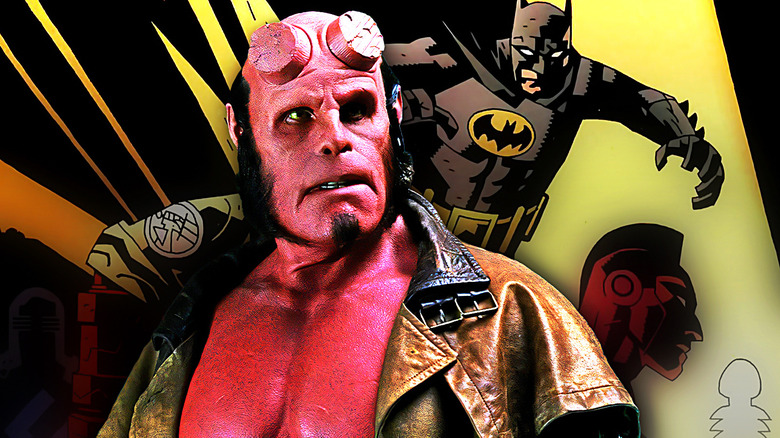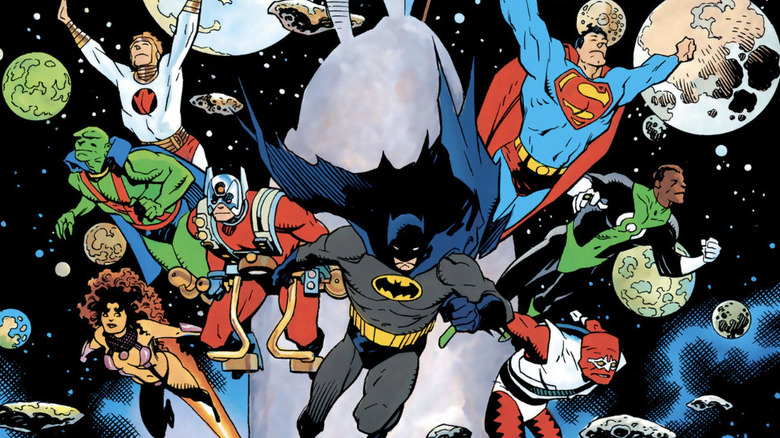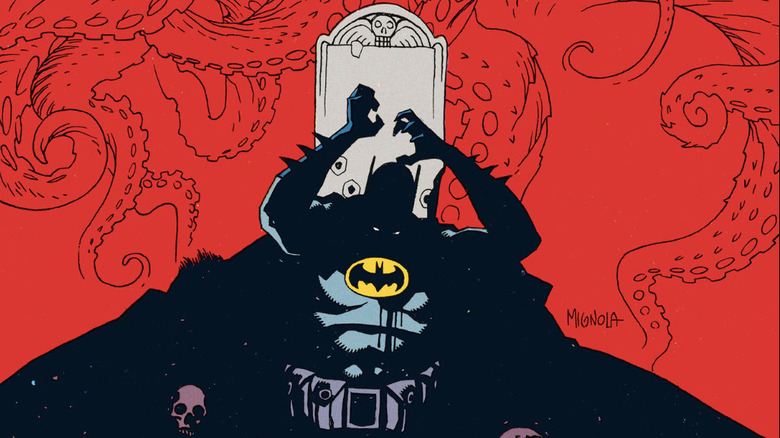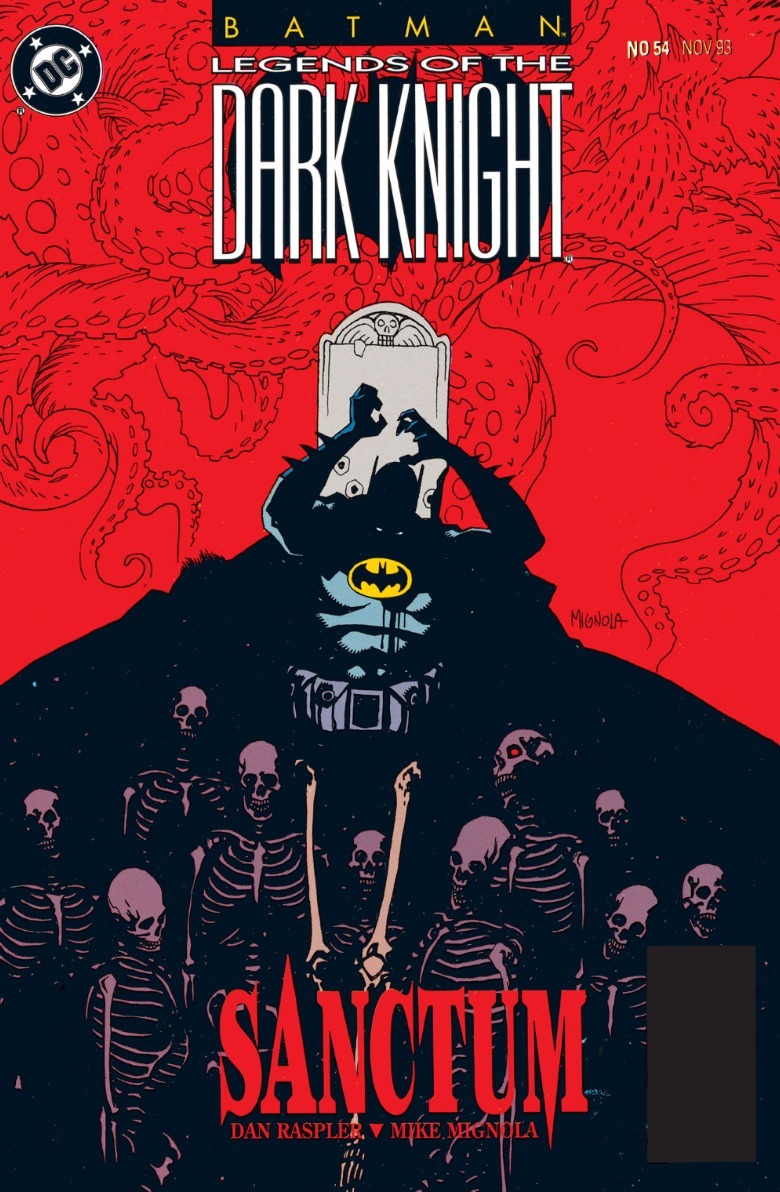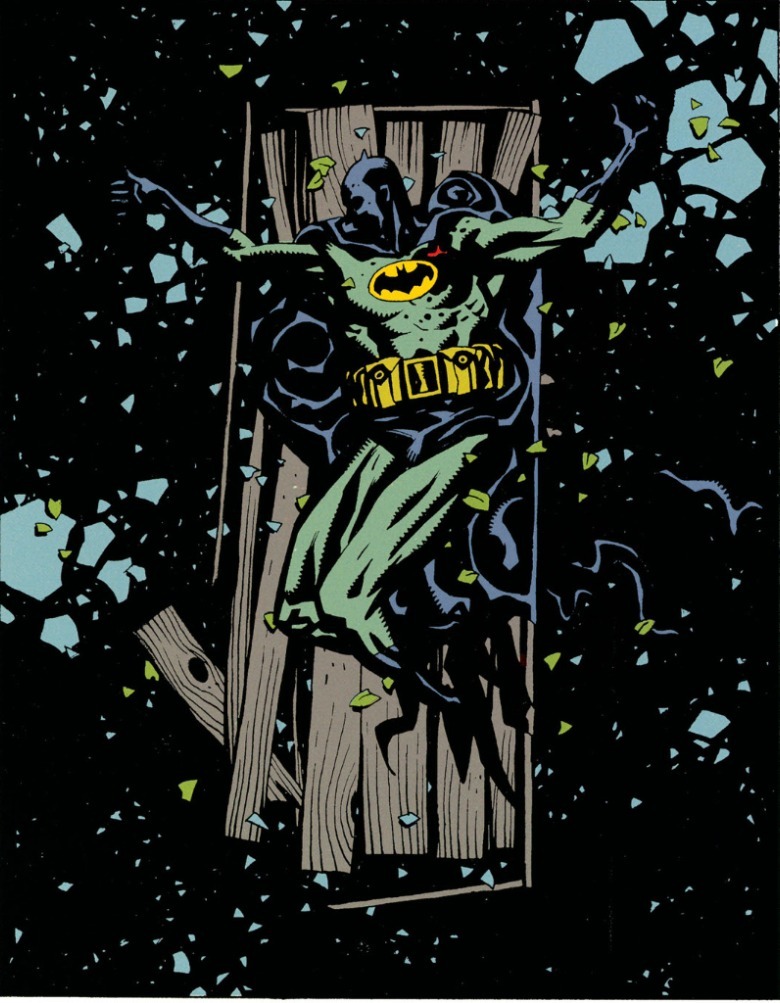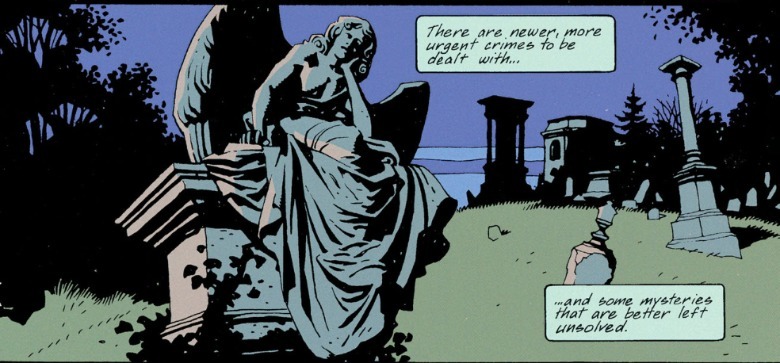Mike Mignola Considers This Batman Comic The First Hellboy Story
We may receive a commission on purchases made from links.
Comic artist Mike Mignola has an impressive portfolio (enough to literally fill an art gallery), but he'll be most remembered for creating comic book hero Hellboy.
Simultaneously a superhero, paranormal detective, and a monster himself, Hellboy's destiny is to end the world, but he'd much rather unwind with a smoke and drink after a hard day at work fighting demons. Hellboy and the world he inhabits are a delicious stew of everything Mignola finds compelling as an artist: horror flicks, ghost stories, and pulp fantasy. The enormous shared setting of "Hellboy" spin-off comics is like an H.P. Lovecraft story retold by Jack Kirby.
Recent documentary "Mike Mignola: Drawing Monsters" tells its subject's life story, of which Hellboy occupies a big chunk. Across extensive interviews with Mignola, his collaborators, and his fans, they agree that his vision for Hellboy crystalized with the 1993 Batman story "Sanctum" (published in "Legends of the Dark Knight" #54). This 26-page issue follows the Dark Knight chasing a criminal through a Gotham City graveyard. After Batman falls into one of these graves, the comic pulls back its shell and reveals a ghost story underneath.
Dan Raspler scripted the issue, but the plot was Mignola's. The issue was "when Mike becomes Mike" said Guillermo del Toro, director of the first two "Hellboy" movies, and "Hellboy" artist Duncan Fegredo called "Sanctum" a "proto-Hellboy story." That Batman comic, Mignola said, is when he realized the kinds of comics he wanted to create. Instead of returning to Batman or finding another established superhero he could plop into a spooky story, Mignola went ahead and created his own: Hellboy.
Mike Mignola's early comics career at Marvel and DC
My biggest surprise in "Drawing Monsters" was Mignola's early struggles. As a younger comic fan, born after Hellboy had already debuted in 1994, I'm used to seeing Mignola with reverence. But when he first started inking comics at Marvel in the 1980s, he was not hailed as an instant genius.
Mignola called his first job (inking five pages of "The Defenders" issue #116) "terrible" and said, "I made [the penciling] look worse." He survived thanks to the factory style production at Marvel and DC — editors would often need artists and writers on short notices and tight deadlines, so a young Mignola hovered around the offices to scoop up work.
This same mode of production, as Professor Ben Saunders notes in "Drawing Monsters," is why it's so rare for a comic book auteur to thrive at Marvel or DC. So once Mignola established himself, he moved to Dark Horse, which remains Hellboy's home. Still, his '80s-'90s work at Marvel/DC was an important part of his journey, with several gems to be found from that period.
Take 1989's "Doctor Strange & Doctor Doom: Triumph and Torment" (written by Roger Stern), where the two sorcerers venture into Hell to save Doom's mother from eternal damnation. Mignola's watercolored art is spectacular, clearly unlike a traditional Marvel comic, and it sells the tale as worthy of being a giant-sized format. The setting also calls forward to Hellboy; as Mignola admits, he wanted most to draw monsters, not superheroes, and his Gothic style reflects that desire.
Mignola also cites the 1988 DC mini-series "Cosmic Odyssey" as an important learning experience. By drawing characters first designed by Jack Kirby, he learned the virtue of exaggeration. "The freedom to exaggerate was kind of like zapping the Frankenstein Monster with electricity," he said.
Then, "Sanctum," a comic that looked "lit by candlelight" (cartoon writer Henry Gilroy's description in "Drawing Monsters") with its extensive shadows and black coloring, defined the future color palette of "Hellboy."
Sanctum drops Batman into the underworld
"Legends of the Dark Knight" was an anthology comic with a built-in rotating door of writers and artists. Basically, it was a perfect place for someone to tell a small-scale Batman story their way. (There's a reason the "New Batman Adventures" anthology episode is titled "Legends of the Dark Knight.")
Mignola drew and colored both the cover and interiors on "Sanctum." That cover lets the reader know they're in for something spooky; aside from Batman's yellow chest symbol, everything is colored red and black. Above Batman are Cthulhu-esque tentacles, and beneath him, his cape casts a shadow that buries skeletons inside it. The points on the "A" and "M" in the blood-red "Sanctum" title text are pointed extra sharp like a vampire-slaying stake. Take a look at the full image below:
The issue begins with a serial killer, Lowther, hiding in a Gotham cemetery and painting a headstone's glyphs with his victims' blood. Batman appears and a scuffle leaves Lowther impaled on metal spires and Batman unconscious on top of a shattered coffin.
Batman awakens in a preserved Victorian Hall, where he meets Lowther's master: Osric Drood, a 19th century Gothamite who sacrificed his wife to "the Old Ones" for omniscience. Seeing the secrets of the universe caused Drood to take his own life. Now, with Batman lying in his grave, Drood steals his blood to return. This fight ends with Drood's many-angled masters coming to reclaim his soul, with Batman taunting him: "Nobody wants to die Drood, because they fear the unknown. But not you. You know exactly what you're in for."
Batman jumps back to life in the graveyard, unsure of what was real, and after lightning strikes Drood's grave, he decides this mystery is better left buried. The comic's final panel is the still graveyard, a contemplating angel headstone reflecting the stillness.
The setting of "Sanctum" immediately links it to Hellboy. So many "Hellboy" stories unfold in churches, cemeteries, or both: "The Corpse," "The Baba Yaga," "The Wolves of Saint August," "The Crooked Man," etc. And in these stories, the backgrounds are filled with stone statues, which add atmosphere by blurring the line between scenery and humanoid subject. When you walk through a church and pass statues of long-past saints, you can feel as if they're watching you. The statues in Mignola's comics have the same effect. "I'm not cut out to draw cars and buildings, most of the things comics are made of [...] but I can draw cemeteries, spooky looking s***, Victorian-era s***," Mignola explained in "Drawing Monsters."
There is also a clear progression in the color scheme of "Sanctum." It starts blue during graveyard scenes, suggesting the darkness of night. When Batman falls into Drood's realm, the background colors shift to yellow; Batman's dark figure now contrasts against the setting instead of blending into it. The shading becomes a hellish red when Batman and Drood fight, then it reverts back to blue when Batman comes to. All of these color schemes look right out of "Hellboy" comics.
Batman may not fight monsters like Hellboy does, but Mignola's Gothic aesthetic fits the Dark Knight too, and "Sanctum" proves it. Batman's black costume is often depicted as a moving shadow, which blends perfectly with how Mignola saturates his drawing with black ink to suggest heavy darkness. Plus, like Hellboy, Batman himself blurs the line of heroic and spooky. It's no surprise that Hellboy and Batman have crossed over (where they got on thick as thieves), or that Mignola has sometimes come back to Batman; check out "The Doom That Came to Gotham," a period piece Batman comic perfect for fans of "Batman: Caped Crusader."
Hellboy may be the son of the Devil, but his real creator pulled from numerous other pulp heroes to bring him to life. Don't forget to include Batman in that list.
